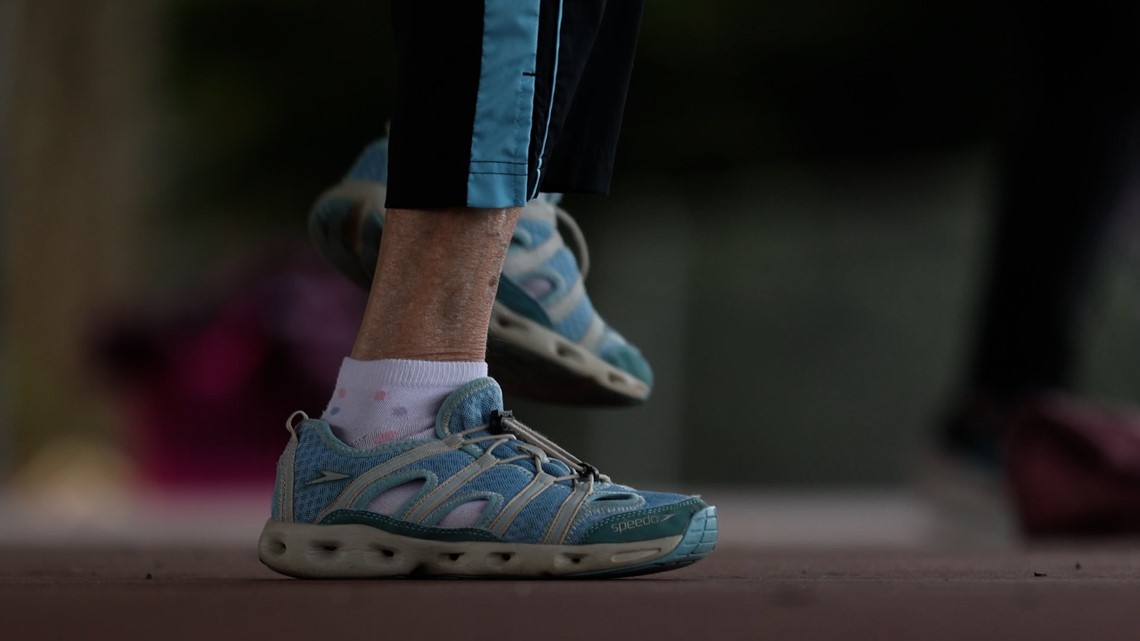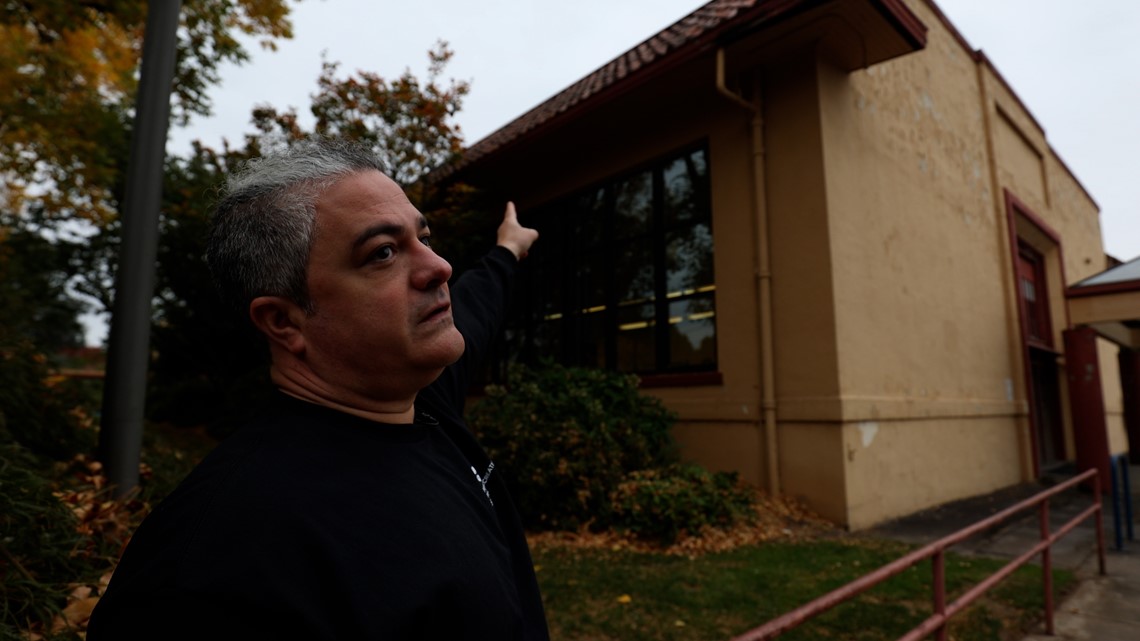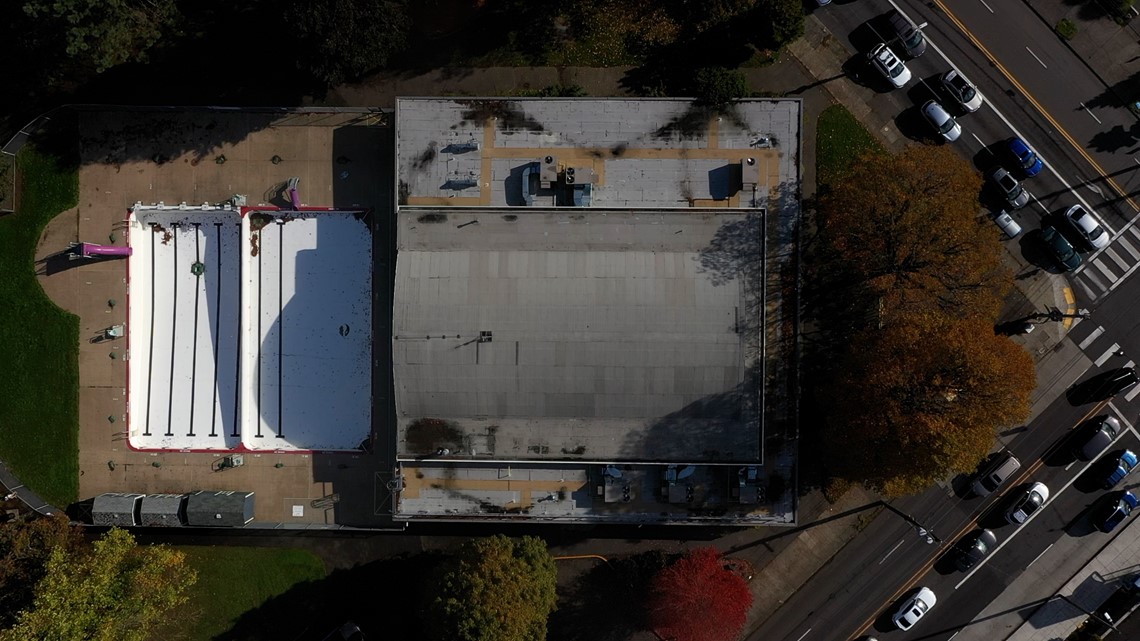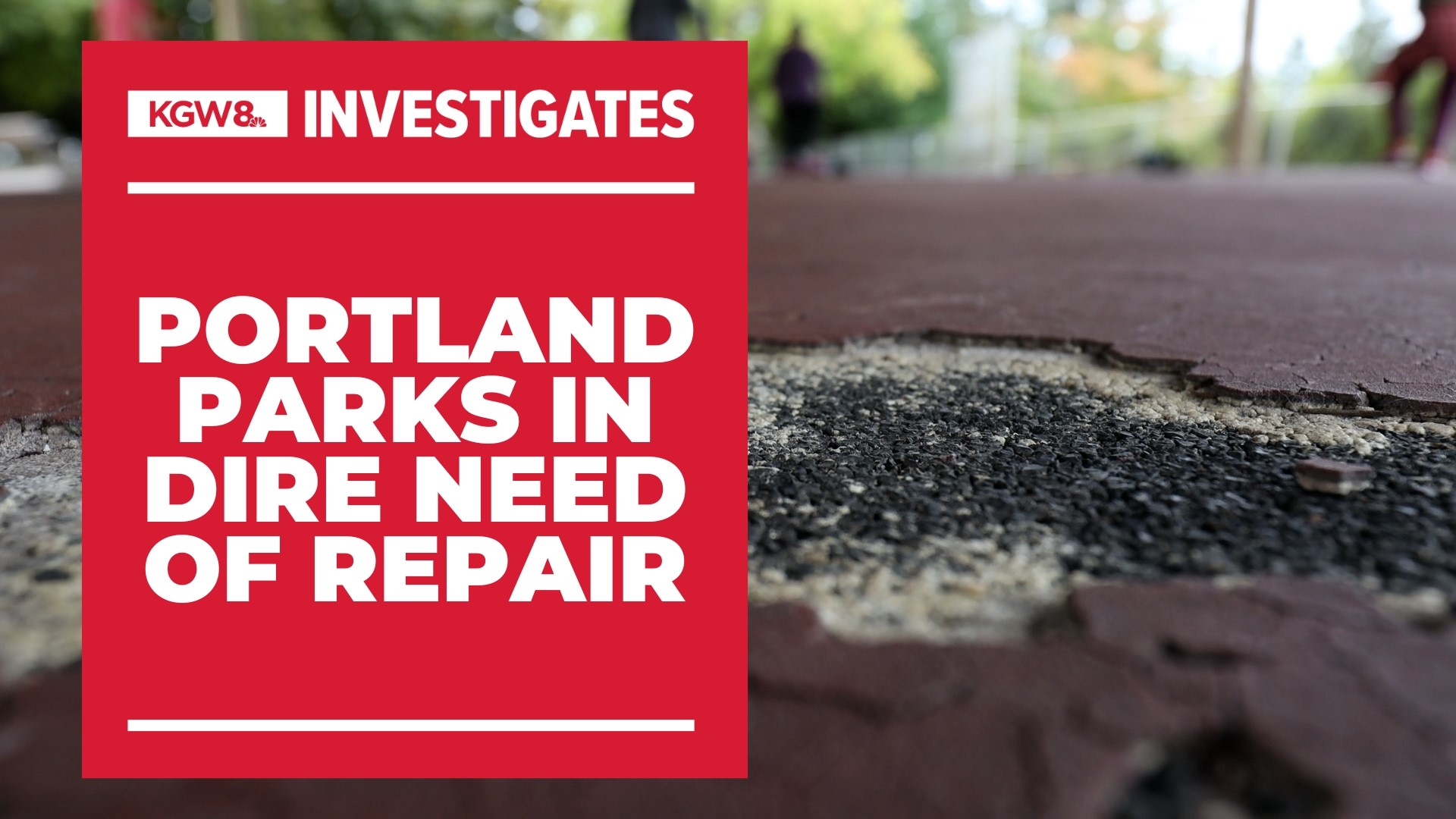PORTLAND, Ore. — Each morning, a group of Portland seniors meets at the covered basketball court outside the Multnomah Arts Center. When the music starts, the movers and shakers begin another day with Zumba, the dance-inspired fitness program.
"We hug, we laugh, we cry together — it's just an amazing thing," said instructor Kristen Sanders. "It's Oregon and it rains a lot, so we're trying to use a covered space that's fairly safe for us to dance on because I'm teaching people age 50 and over."
While focusing on the instructor and each movement, the exercisers still need to pay close attention to where they're stepping. The basketball court surface is crumbling, cracking and patched.
"There have been some falls, where the traction on their tennis shoes have hooked on the chips," Sanders said. "(The court) has been let go for way too long, it would be wonderful to have a safe space outside where we can keep dancing."


The basketball court is on a list of projects at the Multnomah Arts Center that need repair.
"Until there's a major project to completely resurface this and fix everything, it's going to continue to get worse," said Portland Parks and Recreation assets manager Chris Silkie, pointing to holes in the court.
A leaking roof, an older playground, a closed-off kitchen and a failing HVAC system are also on the list of needs at the MAC.
While notable, those issues are drowned out by more than 1,200 other concerns across the City of Portland.
Portland Parks and Recreation reports a $615 million backlog of deferred maintenance and needed repairs throughout its system, a startling figure that PP&R says shows how much of the city parks infrastructure is deteriorating.
KGW requested the data for each failing asset — every park, sidewalk, playground, court, building, bridge and piece of equipment — making a map of everything that PP&R says needs to be repaired and replaced.
The map and a corresponding database are searchable and interactable below. For each asset on the map with a note that the property has multiple projects, use the table to see all project descriptions and estimated costs.
(Note: PP&R said it uses an ENR Construction Cost Index formula to determine the *escalated* estimate for each listed project, increasing the estimated cost every year a project remains unaddressed. The bureau said initial estimates are typically provided by an engineering technician, asset management program manager or project manager — relying on "best professional judgment," recent similar work, unit-cost assumptions in the database, or other studies on similar assets.)
Yesterday's problems, put off for tomorrow
Adena Long, PP&R director, said the deferred maintenance backlog is a compounding problem.
"Ten years ago ... we needed a solution probably more than 10 years ago," Long said.
For her, it's a problem that's exacerbated by a lack of funding from Portland city leaders.
"The growth and deterioration is outpacing the investment," she said. "We don't have enough funds to pursue new (repair) projects and we need to use funds we do have to ensure that the ones we've started are completed."
In October, PP&R canceled its annual meetings for the capital project selection process — typically used to determine which projects should be prioritized for investment and repairs.
In a note at the top of the document, PP&R explains that the meetings were "deemed unnecessary" because "most maintenance funding anticipated in FY24-25 will be allocated to ongoing projects experiencing unexpected cost increases" and "the bureau opted against halting these projects to initiate new ones."
In short, PP&R said it doesn't have the funding to start any new maintenance projects next year.


KGW asked Long if the recent safety-risk closings of places like Columbia Pool and Grant Bowl could be a sign of things to come, with more frequent announcements of closed PP&R assets.
"Absolutely," Long said. "We estimate that one in five assets will close over the next 15 years if we're unable to identify a means by which to address the deferred maintenance issue."
Long said PP&R receives about $5 million in general fund money each year specifically for maintaining and repairing assets.
The 2020 Parks Local Option Levy, which passed in 2020, provided money for operations, not capital projects or capital maintenance. Parks system development charges, one-time fees paid by new developers, can only be used for new projects and expansions, not maintenance.
That leaves the Parks Replacement Bond. It passed in 2014, providing up to $68 million for repairs and maintenance to prevent asset closures. That money was nearly all spent by 2021. The final project to be paid for with bond funds is set for completion this year.
Long said city council members need to find a new funding source for maintenance and repairs of current assets.
PP&R leaders still refer to a 2019 presentation to city council as an outline for potential options, including a new general obligation bond, a local options levy, or a variety of other taxes.
An Oregon bill that would have allowed Portland to create its own parks district, creating a new funding source, died in committee earlier this year.


Removed from the debate over long-term funding options, Zumba instructor Kristen Sanders knows what she would prioritize if she was in charge of making repairs.
"You can clearly tell (the court) is wearing out because it's well-used, so they should focus on that," she said, remarking that one of the Zumba students is 90 years old.
Sanders said she tells her class to wear certain shoes and then try to dance around the holes and cracks, but she would love to not have that daily worry.
"It would be so great and it would take a load off of my shoulders, making sure that they're safe dancing."

